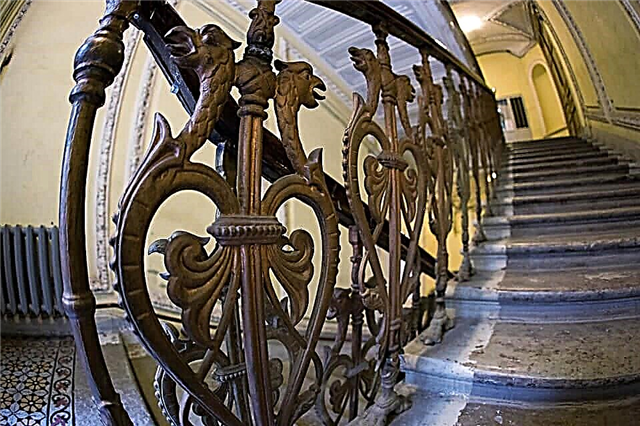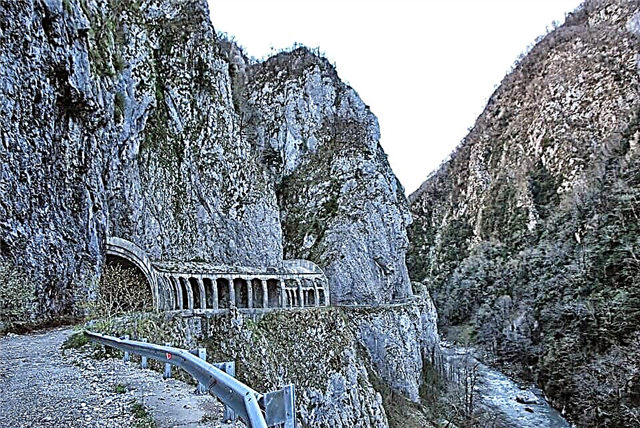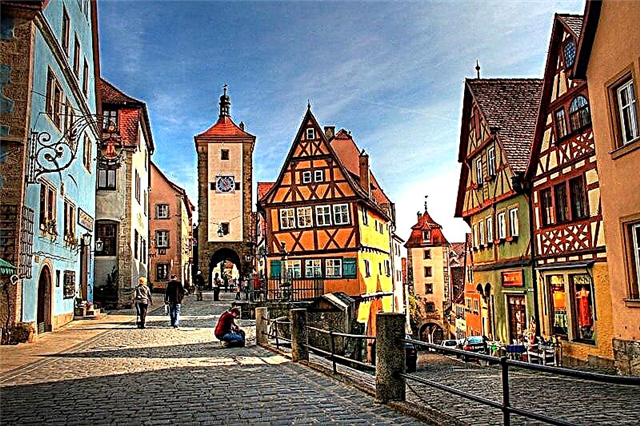There are so many attractions in the capital of Great Britain London. Unique monuments of architecture, Wembley stadium, palaces and ... sewerage.
Content:
Yes, yes, it is the London sewage system that is not only a landmark of the city, but is also included in the list of the seven wonders of the industrial world. Of course, the problem of cleaning and destroying stinking effluents has always been relevant not only for Londoners, but also for residents of any large city. However, at the beginning of the 19th century, an ill-conceived wastewater system turned into a real disaster for the inhabitants of the capital of Foggy Albion..

As early as the 1500s, London's population began to skyrocket. Most of the inhabitants from the provinces moved to a large city, where there were opportunities to get rich pretty quickly, or at least lead a decent comfortable life. In addition to the constantly growing population, a huge number of horses were brought to the city, which were the main means of transportation in those distant times. The sewage system, which would cleanse the city of sewage, became vital.
History of the Great Stench
In the 14th century, the main source of drinking water, naturally, was the waters of the majestic Thames. Londoners, who were not used to saving money and were considered prosperous among their neighbors, ordered water from the guild of water carriers or even brought pipes to their own house. Already in 1582, Mr. Maurice decided to build a water wheel that pumped water from the river. Years passed, technological progress marched by leaps and bounds, and the design was improved over time. In addition, seeing the benefits of the pump, enterprising Londoners managed to build several more such structures by the 19th century. Water was supplied to the houses, Londoners built cesspools under the houses and used toilets. It was simply impossible to cope with so many impurities. For the sake of fairness, it should be noted that wastewater was previously discharged into the Thames, but their quantity was so small that the river dissolved them in a short period of time and carried them away from the city. But in 1815 the situation became simply critical: flush toilets appeared, no one had time to clean the cesspools, and the authorities made one of the most “stupid” and “ill-considered” decisions, as historians say, to direct all wastewater directly to the Thames.
One can only imagine what happened to the river, into which the sewerage system immediately poured from 200,000 toilets, slaughterhouses, farmyards and stables. It should be borne in mind that most toilets were used by whole neighborhoods at once, mostly poor. That is, there was only one toilet for an entire block or street. Sewage rushed into the Thames in a stormy stream, into the river, from which many townspeople took water for drinking and washing clothes. A terrifying stench spread across the Thames, and indeed all over London. The authorities no longer saw an exit and urgently issued a decree prohibiting the discharge of sewage into the Thames. True, this decree was no longer taken seriously by anyone, the cesspools were constantly overflowing, it was impossible to walk along the street due to the abundance of horse manure. He was washed away with dirty water, which returned to the long-suffering Thames.
The well-known talented scientist Mark Faraday, in 1855, wrote an article for the Times newspaper, which every self-respecting resident of the capital read, and still reads. In it, he said: “Sailing on the Thames, all the time it seemed to me that we were sailing right through the sewers, the stench from the water was suffocating, the entire water space around the ship was filled with sewage. The water was so cloudy that even a few centimeters of sunlight couldn't penetrate it. " The Thames overflowed its banks, and after the ebb of water, from the once majestic river, all the sewage remained on the bank. Probably, nature itself decided to punish the inhabitants of a huge city for their irresponsible attitude to the environment. The summer of 1855 went down in history as the time of the Great Stench... Naturally, this amount of sewage contributed to outbreaks of cholera and typhoid epidemics. Many Londoners died from disease right on the streets of the capital. The number of victims of the Great Stench could not be counted, since the corpses were buried outside the city in common graves in order to somehow contain the epidemic. A mass exodus began from London. Everyone fled: the poor, wealthy townspeople and even government officials.
Construction of the London sewerage system
It was no longer possible to fight the stench, and those who nevertheless decided to stay in the House of Lords decided to build a reliable sewage system in the city. It did not take too long to approve it: the decision was legalized in just 18 days. The construction of the London sewer system was entrusted to Joseph Bazalgetti. This talented engineer managed to build a sewage system in a fairly short period of time, which not only began to reliably drain wastewater from the capital of Great Britain through two huge tunnels, but also became a kind of attraction in London, one of the seven wonders of the industrial world. Its official launch took place on April 4, 1865. This was one of the most significant events of that time, so when the new sewage system was launched, the Prince (!) Of Wales himself was personally present. It was not possible to cope with the stench immediately, it took another five long years for the stench to become only a part (albeit unpleasant), but, nevertheless, of the story.
Two tunnels, each paved with masonry, and in a Victorian style, now lead sewage and effluent to two sewage treatment plants, Plumstead and Beckton. This system is striking in its simplicity, but, despite such an unpretentious design, the London sewage system has already been functioning without failures for 150 years.... At the very beginning of the tunnels, their height is about 1 meter and 25 centimeters, but as the stormy streams of sewage increase in volume, the diameter of the tunnels also becomes larger. For example, in the east part of London, the ceiling of the tunnel is three and a half meters, which prevents even the most powerful currents from escaping outward.
Alas, and perhaps fortunately, the London sewerage system is not accessible for inspection. Even experienced diggers are not allowed into the tunnels. This is due to the fact that there are no special elevations in the system and the probability of falling into polluted streams is very high here. By the way, the sewerage system of the capital of France, Paris, is available for tourists. In London, you can learn about the sewage system and the struggle of the townspeople for their lives and the purity of the Thames only at the treatment facilities, which, according to the architects' plan, were built in the form of Catholic cathedrals. The reason for this decision is not known for certain. Although historians are practically unanimous in opinion: this is a kind of tribute to God, who poured heavy rains on London at the beginning of the construction of the sewer system. This natural phenomenon at least a little cleared the Thames and London from sewage and suspended the high mortality rate.
The sewerage system of London is not just an industrial wonder of the world, it is a kind of monument to the heroism of the people who were able to save the majestic city of Europe. In addition, the story of the Great Stench is a reminder to our descendants of how an irresponsible attitude to the environment can wipe out all of humanity from the face of the planet in a matter of years.











